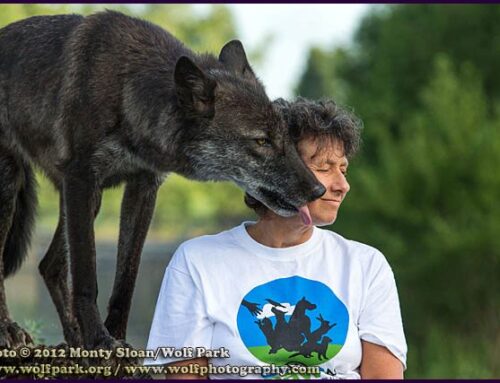 Early on in my search for information to help me understand my fearful dog someone sent me a paper on the effects of abuse and trauma on children. I would thank her and share the paper if I remembered who it was and hadn’t given my only copy of it away. Sorry.
Early on in my search for information to help me understand my fearful dog someone sent me a paper on the effects of abuse and trauma on children. I would thank her and share the paper if I remembered who it was and hadn’t given my only copy of it away. Sorry.
This was a pivotal event for me. I realized that my efforts to change Sunny’s behavior were secondary to my ‘understanding’ of why he was behaving the way he was. I don’t mean that I needed to know the exact events he experienced. Many owners of fearful dogs believe that if only they knew what happened to their dog they could more easily ‘cure’ them. While knowing a dog’s history is helpful, one need not know the specifics of the dog’s experience to understand how to work with the dog.
In Sunny’s case, he did not have the opportunity to experience novel and enriching events when he was a pup. That’s all it takes to mess up a dog’s brain. From here on in many or most of the ‘normal’ experiences a dog is going to have can be traumatic for them. If more people understood this puppymills and backyard breeders would go out of business. These dogs are born into deprivation. Imagine someone trying to sell cars that on any given day were built when half the workers who assembled them were absent. You wouldn’t know whether all the parts were securely attached, or there at all. At least with a car, if the deficit doesn’t get you killed you can have it repaired. It’s not that easy with an animal. A recent study shows that dogs in mills suffer lasting psychological damage.
Here is a list of signs and symptoms of early childhood traumatic stress. Most could be applied to dogs suffering from fear based behavior challenges.
There are a variety of therapies available to people who want to change how they behave. Cognitive behavioral therapy is one of them. Even though we do not have the option of speaking (and reasoning) with our dogs to help them change how they think about things, it is worth understanding how cognitive behavioral therapy is applied. I cannot ask my fearful dog to take a deep breath and consider how what he is thinking is affecting his behavior, but I can interact with him and manipulate his environment so that his emotional response to things changes.
CBT is a collaborative effort between the therapist and the client. Cognitive-behavioral therapists seek to learn what their clients want out of life (their goals) and then help their clients achieve those goals. The therapist’s role is to listen, teach, and encourage, while the client’s roles is to express concerns, learn, and implement that learning.*
We can suggest that when a person looks at a cheesecake and rather than responding to the mouth watering appeal of the pastry, envisions the damage the pastry can do to their arteries. Instead of putting it into their shopping cart they head to the fruit aisle and choose an alternative. With our dogs we need to find ways we can make alternative behaviors and responses rewarding to them. When people appear I ask Sunny to get his frisbee so he can play (this seems to be his main goal in life). Though Sunny is still startled and scared by the appearance of people, this response has diminished in intensity and more quickly switches to a more neutral or positive response.
But change isn’t easy. Imagine how you respond when you hear the sound of fingernails scrapping on chalkboard. If you’re like me, even thinking about it elicits a feeling of chills. Now imagine someone expecting you to stop feeling that way, because they think you should. How successful is that going to be? How successful are they going to be by threatening you to stop cringing and covering your ears? How are you going to feel about them if they forced you to sit there and listen to sound of fingernails on a chalkboard over and over again?
Fearful dogs are suffering and many of the ways they are handled and trained contribute to this suffering. If you stop and think about it, you may be able to change your behavior and achieve goals that both you and your dog probably have in common.
*http://www.nacbt.org/whatiscbt.htm





